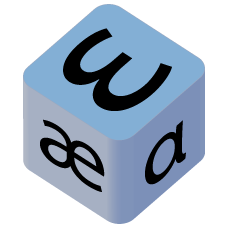살 and 쌀 are the same word
hate to do the um ackshully meme
but ㅅ has a softer ‘s’ pronounciation whereas ㅆ has a more excentuated SS sound where you move air with the bottom and top of your teeth put together when spoken
for the actual words themselves 살 is like the fat/skin of something and 쌀 is rice, def don’t want to mix up the two🤗
i still dont hear the difference. its been over a decade
and im not sure why this is an ‘um actually’ since that’s literally the point of the meme, bruthm! 😜
Now say fast: fat rice fat rice fat rice
Comments are so much “That’s the joke.”
I feel you, OP. When you can’t hear it, you can’t hear it.
ITT: people not knowing the difference between allophone and homophone.
ITT: people not knowing the difference between allophone and homophone.
I don’t think that it’s the case here. It’s simply that OP’s meme leaves a lot of stuff up to context, and people are filling the gaps with assumptions. We [people in general] shouldn’t assume ignorance out of simple miscommunication.
In case someone here does not know the difference:
- Allophones - sounds associated with the same phoneme in a certain language. For example, in English [pʰ] (as in “pit”) and [p] (as in “spit”) are allophones, as they convey the same phoneme /p/.
- Homophones - different words that sound the same. For example, in English “two” and “too” are homophones for most speakers, as they’re typically pronounced [tʰu̟ː] and parsed as /tuː/.
I don’t get it. A little more context would be appreciated. Are they pronounced the same or mean the same or both?
They aren’t the same.
살 /sal/ “meat” is pronounced with [sʰ]. It’s roughly like the “ssh” in “grasshopper”.
쌀 /s͈al/ “uncooked rice” uses [s͈] instead. It’s a “tense” consonant; if I got it right the main difference is faucalised voice, you’re supposed to lower the larynx a bit while speaking it.
Since the difference yields different words, they’re a minimal pair so they aren’t allophones but different phonemes. If you speak Korean (I don’t) the difference between those two is on the same level as the one between English “bot” vs. “pot”, or between “bit” and “beet”. However since the contrast isn’t common out there they sound similar for non-speakers, and I think this to be what OP is trying to convey.
Oh it’s so hard sometimes to get these differences because one just… doesn’t get it. Doesn’t have experience of the difference.
In Finnish vowel length matters a lot, and when there are non-native speakers, it’s painfully obvious, as that’s something that’s hard to “get right” if you haven’t been exposed to the difference since you were a kid.
It’s probably a somewhat subjective feeling of mine, but I’m pretty sure it’s easier to pass as a native speaker of English to English native speakers than it would be to do the same for Finnish. Similarly I’d have a lot of trouble learning the tonal and other minor differences in lots of Asian languages as Finnish or English or any other language I speak doesn’t really utilise them as much. So I’m “deaf” to them. For now.
Oh it’s so hard sometimes to get these differences because one just… doesn’t get it. Doesn’t have experience of the difference.
Yep. I literally do not hear different sounds.
The following vowels sound kind of different! I saw something that suggested the F1 or F3 vowel frequency is how natives hear the difference, but I’m not sure if that’s the whole story.
Yup - we train ourselves to ignore distinctions as “not meaningful” because of our native languages, and then when we learn another language, one that uses those distinctions, it bites us back. You can get it later on, mind you, but it’s always a bit of a pain.
My personal example of that is from Italian (L2): it took me a few years to be able to reliably distinguish pairs like “pena” (pity) and “penna” (feather), simply because Portuguese (L1) doesn’t care about consonant+vowel length.
Yup - we train ourselves to ignore distinctions as “not meaningful” because of our native languages, and then when we learn another language, one that uses those distinctions, it bites us back. You can get it later on, mind you, but it’s always a bit of a pain.
Yep, this is exactly what I’ve been doing through. I need to find an instance in English where a word uses the 싸 sound (ssa) but I still haven’t found any yet!
That’s not how allophones work. As a German native speaker, I have problems with the English vowel system and voice consonants in coda position (end of the syllable), still you won’t find me making a meme how bad, bat, bed, bet are all the same and allophones. Maybe self ironic “they are the same picture” but not using a scientific word wrongly. This is a meme community and I’m happy there are posts at all, but this isn’t for bet linguistics. We are better than that.
If English does not distinguish between the ㅅ in “soft” and the ㅆ in “sun” then wouldn’t we say those distinct consonants are allophones? The body text is literally the “they are the same picture” meme since 살 and 쌀 are obviously and notoriously different words that are only distinguished by the one consonant and are usually the go-to word pair for a native to again try to distinguish the sounds that I’ve been unable to distinguish for over a decade. I’m gonna cry.
If English does not distinguish between the ㅅ in “soft” and the ㅆ in “sun” then wouldn’t we say those distinct consonants are allophones?
If the sound represented by ㅆ [s͈] even appears in English (I have my doubts), they would be allophones in English, while in Korean they’re distinctive sounds associated with different phonemes. Like, what one language considers allophones doesn’t coincide with what another does, you know?
And what you posted in the OP proves that they aren’t allophones in Korean, as their difference conveys different words.
I think you understand what I mean but something about how I wrote it confused you. Would it make more sense if instead of “language” I said “native language”?
Yes, both ㅅ and ㅆ occur in English, that’s why some English words are represented by one consonant or the other when written in Hangul. Yes, they are allophones in English. Yes, they are NOT allophones in Korean. And, yep! This meme is about how an L1 English speaker struggles to distinguish the two consonants when speaking Korean.
Does that make sense? I’m not sure which part suggested that they would be allophones in Korean - I guess I assumed too much context >_< The reason it’s so damn hard to learn the difference is partially because the 살/쌀 dichotomy isn’t as well-known to non-natives, I guess.
I think that the big key here is to highlight that allophones are language-dependent, like you’re doing in this comment already. And yes, the meme does make sense now!
Hawaiian has barely any consonants, so k, kh, g, gh, q, t, d, ʈ, … are all allophones no matter which language we are talking about? That’s not how this works. It would work when talking about words loaned into Hawaiian but not when talking about another language altogether.
And allophones aren’t necessarily difficult to distinguish. German has 2 versions of <ch> ([x] and [ç]) depending on the preceding vowel. Also we have quite a few realizations of /r/ (not as many of Dutch though) easy to tell apart and deduct roughly where someone is from. You’re just using the word wrong.
are all allophones no matter which language we are talking about?
I don’t know where you got the impression that I said that if something is an allophone in one language it’s an allophone in all languages. Jeez!
I don’t know where you got the impression that I said that if something is an allophone in one language it’s an allophone in all languages. Jeez!
I think that this impression is mostly from the fact that your post doesn’t make any reference to English (or another language lacking the distinction), so people are incorrectly associating what you said with Korean instead, and incorrectly assuming ignorance.
I don’t think that people would misread you if the meme said
“When you have to distinguish two sounds from a language that are allophones in yours”. // 살 and 쌀 sound the same for me!
That said, I fully agree with you that people aren’t spending enough time trying to understand each other here.
Ah, thanks for the info (from another comment) on Korean rendering some English /s/ as one or another consonant! It hints that English at least comes close to the tense-S in some situations.
But English is measure of all things?
You still seem to think that allophone is when they sound the same. That’s not even part of the definition. In my last comment I elaborated about allophones that sound quite distinct for native speakers. Let me now explain what allophone really is:
One straightforward definition (that has its flaws) is that allophone is when there are no minimal pairs. You literally gave a minimal pair.
You can even have two identical phones belonging to different phonemes. German devoices final consonants so /d/ has the allophones [d] and [th]. In effect, “Rat” and “Rad” both have final [th] while being allophones of /t/ and /d/ respectively.
Quick search:
살 [sal]: fat, flesh
쌀 [ssal]: rice
Just 1min! Mastering ‘살’ and ‘쌀’ Pronunciation: 살vs쌀 #shorts #koreanpronunciation [00:57 | https://youtu.be/BzgquU7YfWQ]
In phonology, an allophone is one of multiple possible spoken sounds – or phones – used to pronounce a single phoneme in a particular language.
Phonology 101: Phonemes and allophones | 06:43 | https://youtu.be/aiB-sdGP_yE
OP should totally watch that
Try looking for a minimal pairs Anki deck to help train ear to hear the difference.





